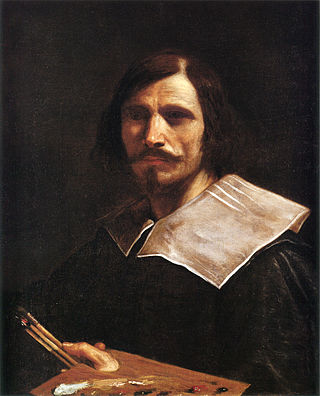
Giovanni Francesco Barbieri, better known as Guercino, or il Guercino[ɡwerˈtʃiːno], was an Italian Baroque painter and draftsman from Cento in the Emilia region, who was active in Rome and Bologna. The vigorous naturalism of his early manner contrasts with the classical equilibrium of his later works. His many drawings are noted for their luminosity and lively style.

Girolamo Muziano or Mutiani, was an Italian painter, one of the most prominent artists active in Rome in the mid-to-late sixteenth century.

Cento is a town and comune in the province of Ferrara, Emilia-Romagna, Italy.

Giovanni Lanfranco was an Italian painter of the Baroque period.
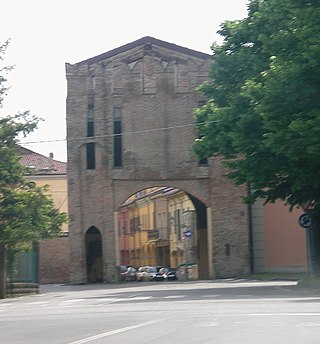
Pieve di Cento is a comune (municipality) in the Metropolitan City of Bologna in the Italian region Emilia-Romagna, located about 25 kilometres (16 mi) north of Bologna.
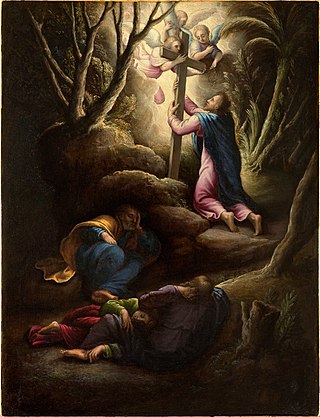
Giovanni Battista Cremonini was an Italian painter of the Renaissance period.
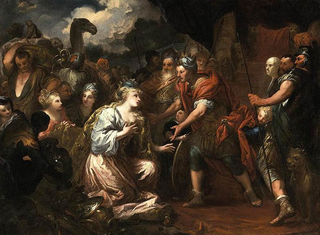
Pietro Dandini was an Italian painter of the Baroque period, active mainly in Florence.

Girolamo Donnini was an Italian painter of the Baroque period, born in the town of Correggio, Emilia-Romagna. He was a pupil of the painters Francesco Stringa in Modena, and then of Giovanni Gioseffo dal Sole in Bologna, then traveled to Forlì to work with Carlo Cignani.

Santa Maria Assunta is a Renaissance church in Genoa, Italy. It is located in a residential sector called Carignano located on the hills just above the city center, thus the church is also known as Santa Maria Assunta di Carignano.
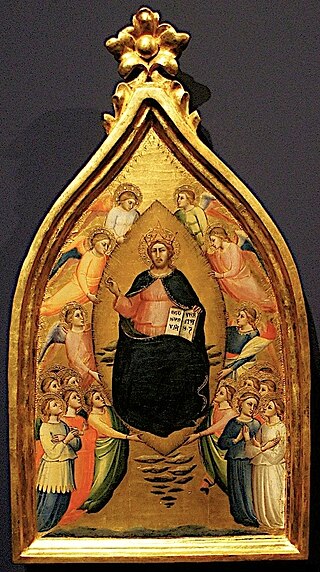
Mariotto di Nardo di Cione was a Florentine painter in the Florentine Gothic style. He worked at the Duomo of Florence, the church of Santa Maria Maggiore, and the Orsanmichele. He created both frescoes and panel paintings, and was also active as a manuscript illuminator.

Benedetto Gennari II was an Italian painter active during the Baroque period.

San Procolo is an early Gothic-style, Roman Catholic church and former monastery-hospital located on Via Massimo D'Azeglio #52 in central Bologna, region of Emilia Romagna, Italy.

Santissimo Salvatore is a Baroque-style Roman Catholic church in central Bologna, Emilia-Romagna, Italy.

Bartolomeo Gennari was an Italian Renaissance painter. His painting style is consistent with the Bolognese School of painting.
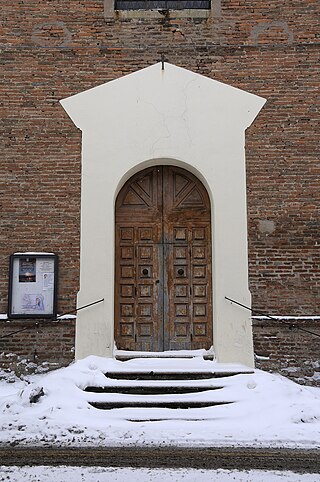
Santa Chiara is a Baroque style, Roman Catholic church or chapel constructed as part of the former Convent of the Clarissan nuns in Pieve di Cento, Region of Emilia-Romagna, Italy.

Antonio Mosca was an Italian painter.

The Church of Santa Maria Maggiore is an important place of worship in the city of Trento, and the site of the Third Session of the Council of Trent. It was built by Antonio Medaglia on the model of the basilica of Sant'Andrea in Mantua, at the wish of the Prince-Archbishop Bernardo Clesio. In November 1973 Pope Paul VI accorded it the status of minor cathedral.
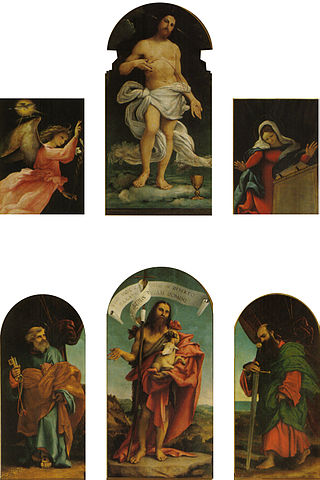
The Ponteranica Altarpiece is a six-panel oil painting series produced by Lorenzo Lotto in 1522, commissioned by the Scuola del Corpo di Cristo for the parish church of San Vincenzo e Sant'Alessandro in Ponteranica, where it still remains. Its upper register shows the risen Christ flanked by an Annunciation scene, whilst below is John the Baptist flanked by saints Peter and Paul.

The church and convent of the Santissima Annunziata is a Baroque-style, Roman Catholic church located on Piazza de Servi #4, Pistoia, region of Tuscany, Italy. The convent presently functions as a warehouse. The church is down via Laudesi from the San Desiderio, and via Piazza de Servi, From San Giovanni Decollato.


















